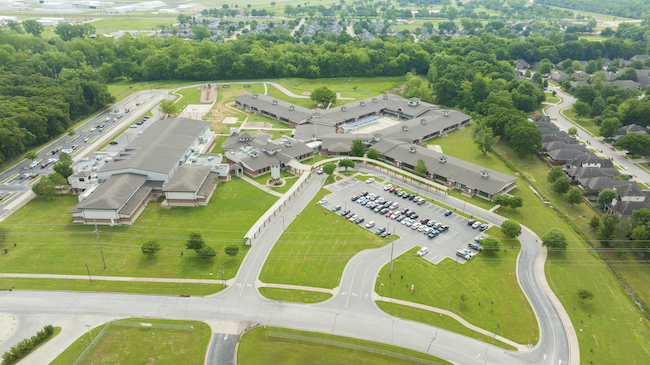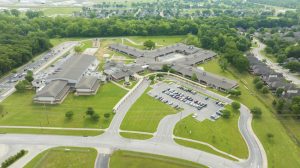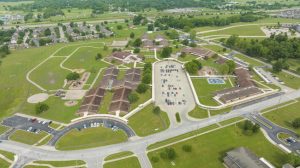
Kyle Haskett, PE
Associate
Kyle received both his Bachelor of Science in Architectural Engineering and Master of Science in Civil Engineering-Structural Emphasis from the University of Oklahoma. He is…
View Profile
As we come to the end of another school year, I always think back to my highs and lows. What went really well this school year? What could I improve on for next school year? Why am I still waiting in this pickup line to pick up my child from school?
Are you a parent of an elementary school-aged child?
Have you sat in the ridiculously long pickup lines after school?
Have you ever wondered how your school’s traffic control design could be better and safer?
I recently sat down with one of our Civil Engineering principals, Jordan Rodich, to get a better understanding of the issues. Traffic control for drop-off and pickup was actually a service line I didn’t realize we offered. Then again I probably should have known this since civil engineering encompasses transportation as well as the sites for the buildings that I deal with daily. At the end of the day, a degree in engineering is a degree in problem-solving through data, existing conditions, identifying the underlying problem and causes and then exploring efficient solutions.
There are three main components to traffic control with regard to pickup and drop-off at schools. The first component is safety. The second component is getting pickup parents on site and off public roads. The final component is efficiency in getting parents back on their way with their child as quickly as possible. Let’s take a deeper dive into these components.
The number one priority for traffic control with respect to drop-off and pickup is safety. As most of you have experienced, the traffic issues are worse during the pickup than drop-off. During drop-off, many schools open up a little early and have a place for kids to wait before school starts so kids are arriving more gradually. Pickup, however, releases most – if not all – of the kids at the same time.
Safety is twofold. First is the safety of the kids once school is let out. Elementary schools are a little more difficult because the students are generally shorter and harder for people in cars to see. The younger elementary school kids are also a little less aware of traffic and its safe practices. The most effective safety features we can employ are signage, paint, crosswalks, etc.
The second part of safety is when cars back up on two-lane public roads around neighborhood schools. This usually means through traffic will pull out into oncoming traffic to bypass the school traffic. Yikes! This sounds dangerous enough, then you combine that with the potential to have kids running out to parents’ cars. No thanks!
That brings us to our next component: getting all the pickup parents on site. This one surprised me but makes total sense when you stop to think about it. My oldest daughter is finishing up her kindergarten year in public schools, and she insists on parking around the block and walking to school. Leaving behind the psychology of this, it hits me that our school really doesn’t have much of any ability to get parents’ cars on site and off public roads.
It makes so much sense to get all the parents on site to wait for their kids and off public roads. Not only is it safer for the kids, but it is much more efficient for cars that are just passing through. You also get to avoid upsetting homeowners who live on these streets where the parents queue up along and block.
Jordan discussed one way to get as many parents on site is to have multiple lanes that all loop around a portion of the site. It is safer still to have one lane at the loading area so you don’t have kids trying to run across lanes to get into their cars.
Jordan did note that sometimes he has run into existing site conditions that make double lanes impossible. In those cases, sometimes the school can break up the pickup locations by grade so the car queues are not so long and parents can get through the lines faster.
The last component of traffic control for school pickup and dropoff is how quickly you can get parents back on the road with their kids. This can be facilitated, as I mentioned before, by separating kids by grades and allowing for different pickup locations based on grades. Another excellent way is to separate the staff parking lots and the school bus loading and their drive aisles. Jordan said a lot of times the bus lanes will be routed through staff parking and, if possible, they will have separate entrances and exits from parent pickup and dropoff.
One example of the successful implementation of these components noted by Jordan Rodich is Jenks West Intermediate and Elementary school. If you have been by you will notice the double lanes and multiple pickup locations. You will also see the bus lanes are separated from the dropoff and pickup lanes. You will also notice that there is plenty of signage and painted directions.


If all else fails, call our civil engineers at Wallace Design Collective, and we would be happy to help resolve the pesky lines and safety issues of school drop-off and pickup. With summer around the corner, it’s a perfect time to revisit how traffic at your school works.
Happy Summer!

Are you passionate about the AEC industry? Do you want to use your talents with a group of the greatest engineers, landscape architects, technicians and support personnel in the industry? You've found the right place. Wallace is unique in the way we strive to make lives better for our clients, communities and employees. And we believe we have more fun doing our job than just about anyone else! The art of possibility. Discover it at Wallace.
Learn More
I need your help! My kids school pickup and drop off line needs am overhaul. How much would it cost to have someone take a look and give some advice. I think parents would be more than willing to pay for your services AND I’M WILLING TO DO THE FUNDRAISING MYSELF. PLEASE HELP
Rachell Ashton
Parent at East Montgomery Elementary School
Clarksville, TN
6158290271